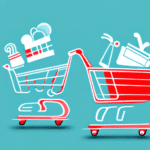Importance of Abandoned Cart Recovery Strategies in E-commerce
For e-commerce businesses, attracting visitors and enticing them to browse products is just the beginning. Despite best efforts, a significant number of these visitors leave without making a purchase, a phenomenon known as cart abandonment. Implementing effective abandoned cart recovery strategies is crucial for recouping lost sales and boosting revenue.
Understanding the Causes of Cart Abandonment
High Unexpected Shipping Costs
One of the leading reasons customers abandon their carts is the surprise of unexpected shipping fees at checkout. Transparent pricing and promotional offers like free shipping can mitigate this issue.
Complicated Checkout Process
A lengthy or complex checkout process can frustrate customers, leading them to abandon their carts. Simplifying the checkout by reducing the number of steps and offering guest checkout options can enhance the user experience.
Concerns About Payment Security
Security concerns can deter customers from completing their purchases. Displaying trust badges and ensuring secure payment gateways can build customer confidence.
Distractions and Lack of Commitment
Sometimes, customers get distracted or are not fully committed to their purchase, causing them to leave without completing the transaction.
Effective Strategies for Recovering Abandoned Carts
Email Recovery Campaigns
Sending targeted emails to customers who have abandoned their carts can remind them of the items left behind and encourage them to complete their purchase. According to Business.com, personalized emails can recover up to 10% of abandoned carts.
Retargeting Ads
Retargeting ads serve as reminders to customers as they browse other websites or social media platforms. These ads can be highly tailored to individual customer preferences, increasing the likelihood of conversion.
Optimizing the Checkout Process
Streamlining the checkout process by minimizing required fields and steps can reduce friction and lower abandonment rates. Offering multiple payment options also caters to diverse customer preferences.
Offering Incentives
Providing incentives such as discount codes or free shipping can entice customers to finalize their purchases. Ensure that these incentives are strategically offered to maintain profit margins.
Enhancing Email Recovery Techniques
Personalized Subject Lines
Crafting personalized and compelling subject lines can increase open rates. Including the customer's name or referencing the abandoned items can make the email more engaging.
Timing of Emails
Timing is critical in email recovery strategies. Sending the first email within an hour of abandonment and follow-up emails within 24 hours can optimize recovery chances.
Compelling Email Content
The body of the email should highlight the benefits of completing the purchase, address potential concerns, and include clear calls-to-action (CTAs) that guide customers back to their carts.
Leveraging Retargeting and Personalized Incentives
Targeted Advertising
Using data-driven insights to create highly targeted retargeting ads ensures that the messaging resonates with the specific needs and preferences of potential customers.
Customized Incentives
Offering personalized incentives based on customer behavior and purchase history can significantly boost conversion rates.
Optimizing the Checkout Process and Enhancing Customer Service
Simplifying Checkout
A streamlined checkout process with minimal steps and clear instructions can reduce frustration and abandonment rates.
Providing Excellent Customer Support
Offering robust customer support options, such as live chat or responsive email support, can address customer concerns in real-time, encouraging them to complete their purchases.
Measuring Success and Continuous Improvement
Tracking Key Metrics
Monitoring conversion rates, open rates, and click-through rates is essential to gauge the effectiveness of recovery strategies. Tools like Google Analytics and email marketing platforms can provide valuable insights.
A/B Testing
Conducting A/B tests on different recovery strategies helps identify what works best for your audience, allowing for data-driven optimizations.
Learning from Case Studies
Analyzing successful case studies within your industry can provide actionable insights and inspire innovative recovery tactics.
Common Mistakes to Avoid in Abandoned Cart Recovery
Being Too Pushy
Aggressive recovery tactics can alienate customers. It's essential to strike a balance between encouraging completion and respecting customer preferences.
Neglecting Multiple Recovery Channels
Relying solely on one recovery method can limit effectiveness. Combining email recoveries with retargeting ads and personalized incentives can enhance results.
Failing to Optimize Continuously
Regularly updating and refining recovery strategies based on performance data ensures sustained success and adaptation to changing customer behaviors.
Future Trends in Abandoned Cart Recovery
AI-Driven Personalization
Artificial Intelligence is playing an increasing role in personalizing recovery strategies, enabling more effective targeting and engagement through predictive analytics.
Integration of New Communication Channels
Exploring new platforms like SMS and social media messaging for recovery efforts can reach customers where they are most active, enhancing recovery rates.
In conclusion, implementing robust abandoned cart recovery strategies is essential for maximizing sales and fostering customer loyalty in the competitive e-commerce landscape. By understanding the underlying causes of cart abandonment, leveraging effective recovery techniques, and continually optimizing strategies based on data-driven insights, businesses can significantly improve their conversion rates and overall revenue.




















